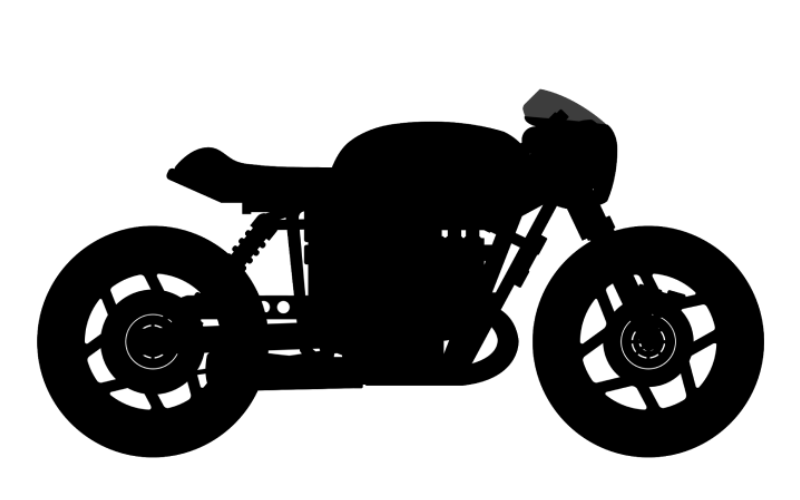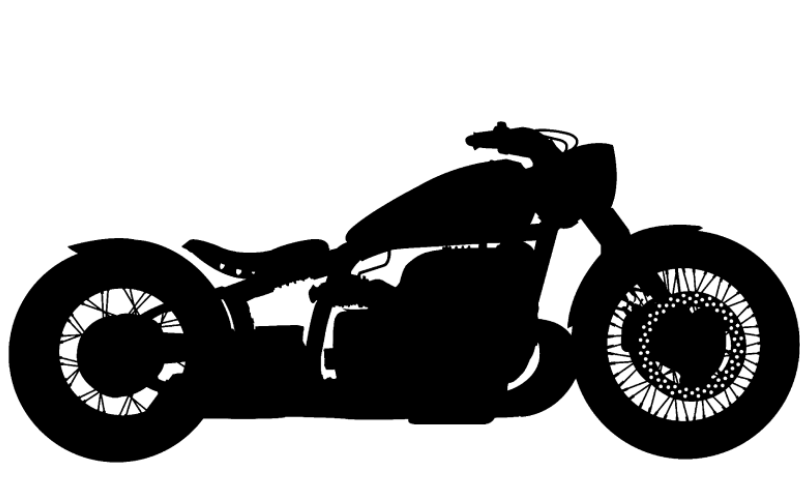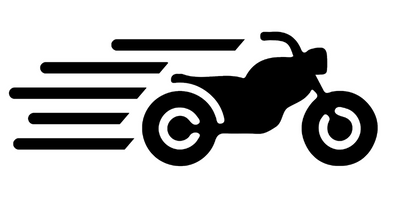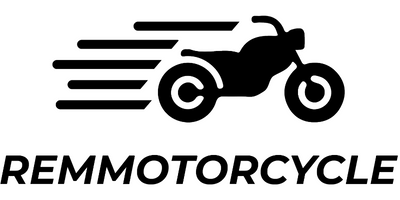RECHERCHE PAR CATEGORIES
RECHERCHE PAR INSPIRATIONS
- Shock absorbers
- Thermal bands
- Aluminum boxes
- Rear curls
- Bubbles
- Turn signals
- Commodos
- Meters
- Rear shells
- Exhaust
- Rear lights
- Air filters
- Forks
- Wardrobe
- Handlebars
- Brake and clutch levers
- Side plates
- Handles
- Headlights
- Footrest
- Tanks
- Mirrors
- Stool
- Silent
- Fork bellows
- Insurance supports
- License plate supports
- Shock absorbers
- Thermal bands
- Aluminum boxes
- Rear loops
- Bubbles
- Turn signals
- Commodos
- Meters
- Rear shells
- Swine
- Rear lights
- Air filters
- Forks
- Wardrobe
- Handlebars
- Brake and clutch levers
- Side plates
- Handles
- Headlights
- Footrest
- Tanks
- Mirrors
- Stool
- Silent
- Fork bellows
- Insurance supports
- License plate supports

- Shock absorbers
- Thermal bands
- Aluminum boxes
- Rear curls
- Bubbles
- Turn signals
- Commodos
- Meters
- Rear shells
- Exhaust
- Rear lights
- Air filters
- Forks
- Wardrobe
- Handlebars
- Brake and clutch levers
- Side plates
- Handles
- Headlights
- Footrest
- Tanks
- Mirrors
- Stool
- Silent
- Fork bellows
- Insurance supports
- License plate supports



- Shock absorbers
- Thermal bands
- Aluminum boxes
- Rear loops
- Bubbles
- Turn signals
- Commodos
- Meters
- Rear shells
- Swine
- Rear lights
- Air filters
- Forks
- Wardrobe
- Handlebars
- Brake and clutch levers
- Side plates
- Handles
- Headlights
- Footrest
- Tanks
- Mirrors
- Stool
- Silent
- Fork bellows
- Insurance supports
- License plate supports
Motorcycle technical control: controlled points
October 25, 2023 12 Comments

After years of debate, the question of technical control OBLIGATORY Motorcycles approaches its term, but not to the extent provided by bikers. On Tuesday October 24, the decree concerning the technical check of motorcycles was published in Official Journal.
We will study this: controlled points, dates, motorcycles concerned.
Motorcycle technical control result
Three possible results can be obtained after technical control:
- A (favorable/validated),
- S (unfavorable for major failure)
- R (unfavorable for critical failure)
In case of S, the technical control will not be valid only for two months, in order to give the time necessary to carry out repairs.
In case of R, the validity will be limited On the day the bike is brought home.
The realization of a counter-visit will be necessary in the event of an unfavorable result.
The control points will be focused on eight different areas:
- Vehicle identification
- Braking equipment
- Direction
- Visibility
- Lights, reflective devices and electrical equipment
- Axles, wheels, tires, suspension
- Chassis and chassis accessories
- Other equipment
- Nuisance
Should you be afraid? No, as you can read below, these are points that call for common sense. As a biker, we are already vigilant on these points.
As a personalization of customization, the modifications made in the right way, properly allow the validation of the CT without concerns.
Inevitably, we are disappointed, we are far from the announced visual control or the recommendations made by the FFMC during public consultation.
Here are the detailed points from the Official Journal :

0.1. License plates
0.1.1.A.7 Non -compliant, missing, damaged or poorly fixed plate Major

0.2. Identification, chassis or vehicle series number
0.2.1.A.6 slightly different from the vehicle document (s) or unusual identification Minor
0.2.1.A.7 missing, incomplete, illegible, manifestly falsified or not corresponding to vehicle documents Major

0.3.1. Vehicle presentation state
0.3.1.A.7 Vehicle State not allowing the verification of control points Major
0.3.1.B.7 Modification requiring compliance with the data of the identification document Major
0.4.1. Control conditions
0.4.1.A.7 Panne of the exhaust gas analysis device during control Major
0.4.1.B.7 Panne of the system for measuring the opacity of smoke during control Major
0.4.1.c.7 failure of the electrical resistance measurement tool during control Major
0.4.1.D.7 Panne of the sound level measurement device when checking Major 0.4.1.E.7 Speed control device failure Major
1. Braking equipment

1.1.2. State and race of the pedal or hand lever of the braking device
1.1.2.A.6 Entry of the brake made difficult Minor
1.1.2.A.7 Too large race, insufficient race reserve Major
1.1.2.B.7 Pedal or hand lever of the damaged braking device Major

1.1.4. Assisted braking device, master cylinder (hydraulic systems)
1.1.4.A.6 Defective assisted braking device Minor
1.1.4.A.7 Maître-cylinder or tank: defective or insufficient fixation, but braking always operating Major
1.1.4.A.8 Master-cylinder defective or non-waterproof, insufficient fixation and inoperative brake Critical
1.1.4.B.6 Witness of the light or defective brake liquid Minor
1.1.4.B.7 Brake liquid level under the Min brand Major
1.1.4.c.7 Contaminated brake fluid Major
1.1.5. Rigid brakes
1.1.5.A.6 Malted conducts Minor
1.1.5.A.7 Damage, excessive corrosion, malfunction with damage risk Major
1.1.5.A.8 Imminent risk of failure, rupture or loss of sealing Critical
1.1.6. Brake flexible
1.1.6.A.6 Front points, twisted flexibles or too short Minor
1.1.6.A.7 Flexible damaged, porous, excessively swollen, poorly placed or rubbing against another room Major
1.1.6.A.8 Imminent risk of failure, rupture or loss of sealing (altered braid)
1.1.7. Brake tabs or platelets
1.1.7.A.6 Important wear Minor
1.1.7.A.7 Excessive wear (minimum infringement brand), fitted tops or plates Major
1.1.7.A.8 Excessive wear (minimum brand not visible), garnishes or broken pads absent or poorly mounted Minor

1.1.8. Brake drums, brake discs
1.1.8.A.6 Disc or slightly worn drum Minor
1.1.8.A.7 Disc or worn or dirty drum Major
1.1.8.A.8 Disc or drum excessively worn, excessively striped, cracked, poorly fixed, broken or absent Critical
1.1.8.b.7 Focus Major
1.1.9. Brake cables, wheelhouse
1.1.9.A.7 Damaged or poorly fixed cable Major
1.1.10. Wheel cylinder or brake calipers
1.1.10.A.6 Waterproofing or protection minor defect Minor
1.1.10.A.7 wheel cylinder or cracked stirrup, damaged, excessively corroded, poorly mounted or insufficient sealing Major
1.1.10.A.8 wheel cylinder or cracked, damaged, excessively corroded, poorly mounted or insufficient seal: imminent risk for safety Critical
1.1.11. Automatic braking corrector
1.1.11.A.7 Defective, poorly adjusted, poorly fixed, seized or waterproofing Major
1.1.12. Complete braking system
1.1.12.A.7 Damaged device or with excessive corrosion, modification presenting a risk Major
1.2.1. Anti -locking system (ABS) and stabilite electronic control (ESC)
1.2.1.A.7 Operating anomaly of the witness Major
1.2.1.B.7 Defeating device, missing or damaged Major

2. Direction
2.1. Mechanical state
2.1.1. Fork pivot
2.1.1.A.6 Abnormally hard driving Minor
2.1.1.A.7 Damage or poor fixation Major
2.1.2. Steam
2.1.2.A.6 Friction of a mobile part of the wheelhouse against a fixed part Minor
2.1.2.A.7 Damage, wear of the elements or play between organs that should be fixed Major

2.2.1. Handlebar state
2.2.1.A.7 Damage or poor fixation Major
2.2.2. Column, fork and steering shock absorbers
2.2.2.A.6 Damage or poor fixation Minor
2.2.2.A.7 Damage or poor fixation: Assigned direction Major
2.3.1. Game in the direction
2.3.1.A.6 Abnormal game Minor
2.3.1.A.7 Excessive game Major
3. Visibility
3.1.1. Field of vision
3.1.1.A.6 Obstruction in the driver's field of vision Minor
3.3. Mirrors or mirrors
3.3.1.A.6 Mirror or slightly damaged device Minor
3.3.1.A.7 Mirror or ineffective device, strongly damaged, missing or poorly fixed Major

4.1.1. Headlights
4.1.1.A.6 Lightly defective fire (lamp, reflector or ice) Minor
4.1.1.A.7 missing or failing device Major
4.1.1.B.6 Adjustment device for the range of inoperative headlights Minor
4.1.1.B.7 Emitted color, position or intensity not in accordance with the requirements Major
4.2.1. Front, rear and daytime positions
4.2.1.A.6 Non -regulatory color or altered visibility Minor
4.2.1.A.7 Failive device Major
4.3.1. Stop lights
4.3.1.A.7 Failive device Major
4.3.1.B.7 Fire of color other than red: highly reduced light intensity Major
4.4.1. Management indicators and distress signal lights
4.4.1.A.6 Color emitted, position or intensity not in accordance with the requirements Minor
4.4.1.A.7 Failive device Major
4.8.1. Catadiopters
4.8.1.A.6 Defective catadiopter, damaged or poorly fixed Minor
4.9.1. Mandatory witnesses for the lighting system
4.9.1.A.6 Inoperative device Minor
4.10.1. Electric wiring (low voltage)
4.10.1.A.6 deteriorated or poorly fixed wiring Minor
4.11.1 Service battery
4.11.1.A.6 Waterproofing or fixing defect Minor
4.12.1. Battery trunk
4.12.1.A.7 Battery box strongly deteriorated or poorly fixed Minor

4.13.1. High voltage massage wiring, connectors and braids 4.13.1.A.6 Damage Minor
4.13.1.A.7 Important deterioration Major
4.13.1.B.6 Bad fixation Minor
4.13.1.B.7 Bad fixation: risk of contact with mechanical parts or the environment of the vehicle Major
4.13.2. Mass continuity
4.13.2.A.6 Test unable Minor
4.13.2.A.7 Non-conformity Major
4.13.3. Load cable, load gain and its protection
4.13.3.A.6 Damage Minor
4.13.3.A.7 Significant damage or lack of protection Major
4.13.3.B.6 Unable to do Minor
4.13.3.B.7 Failure fixing Major
4.14.1 Electrical and electronic equipment on high voltage circuits
4.14.1.A.7 Important deterioration, lack of sealing or faulty fixation Major
4.15.1 Anti-start-up device
4.15.1.A.6 Non-functionation Minor

5. Wheels, tires and suspensions
5.1.3. Wheel bearings
5.1.3.A.6 Abnormal game or noise Minor
5.1.3.A.7 Excessive game or noise too tight: disturbed stability Major
5.2.1. Wheel hub
5.2.1.A.6 Missing or loosened nut or wheel Minor
5.2.1.A.7 Missing or loosened wheel or wheel: Risk of wheel detachment Major
5.2.1.B.6 Used or damaged hub Minor
5.2.2. WHEEL
5.2.2.A.6 poor condition of the shelves Minor
5.2.2.b.7 seriously distorted, used, poorly assembled or modification presenting a risk Major
5.2.3. Tire
5.2.3.A.6 Friction or risk of friction of the tire against other flexible elements Minor
5.2.3.A.7 Size, load capacity or category of the speed index of the tire that does not comply with the requirements Major
5.2.3.B.6 Pressure of abnormal or uncontrollable tires Minor
5.2.3.B.7 Used, damaged, cut, cut, mounting or unsuitable repair Major
5.2.3.b.8 seriously worn, damaged, cut: Imminent risk for safety Critical

5.3. SUSPENSION
5.3.1. Springs and stabilizers
5.3.1.A.7 Spring or stabilizer damaged or poorly fixed stabilizer Major
5.3.2. Shock absorbers and fork
5.3.2.A.6 Bad tie of shock absorbers without risk of dropping Minor
5.3.2.A.7 damaged, poorly fixed shock absorber or giving signs of leak or serious dysfunction Major

6.1 CHASSIS
6.1.1. General condition of the chassis
6.1.1.A.6 Minor deformation or corrosion of an element of the chassis Minor
6.1.1.A.7 crack, deformation, excessive corrosion or defect in assembling an element of the chassis Major
6.1.1.B.6 Modification not allowing control of part of the chassis Minor
6.1.1.B.7 Modification presenting a risk Major

6.1.2. Reservoir and fuel pipes
6.1.2.A.6 Slightly damaged drive Minor
6.1.2.A.7 Driver strongly damaged Major
6.1.2.A.8 risk of fire linked to a fuel leak, poor protection of the fuel tank or the exhaust system, in the state of the engine compartment Critical
6.1.2.B.7 Bad fixing of the tank, protective carts or fuel pipes Major
6.1.2.c.7 Fuel leak or missing or ineffective filling cap Major

6.1.5. TRANSMISSION
6.1.5.A.6 Fixing bolts loosened or missing Minor
6.1.5.B.6 Excessive wear of universal joints Minor
6.1.5.c.6 Anti-dust cap or severely deteriorated, missing or cracked protection device Minor
6.1.5.D.6 Modification of the transmission Minor
6.1.5.E.6 Light wear of the chain, crown, pulley Minor
6.1.5.e.7 Damage to the transmission or abnormal tension of the chain or belt Major
6.1.6. Engine support
6.1.6.A.6 Fixing anomaly Minor
6.1.6.A.7 Strongly damaged fixings Major

6.2.1. Bodywork or deficiency
6.2.1.A.6 Sanrew or damaged or poorly fixed element Minor
6.2.1.A.7 damaged or poorly fixed panel or element: protruding part with a risk or risk of falling Major
6.2.1.B.7 Cabin or poorly fixed basket Major
6.2.2. Doors, door handles and other opening
6.2.2.A.6 opening, hinge, damaged lock or trifle Minor
6.2.2.A.7 opening, hinge, lock or defective, missing, poorly fixed or likely to cause injuries Major

6.2.3. Siege / saddle
6.2.3.A.6 Step/saddle slightly defective or absent (excluding absence of a driver's seat/saddle) Minor
6.2.3.A.7 Headquarters/saddle strongly defective or absent Major

6.2.4. Driving commands
6.2.4.A.6 Order required to drive the defective vehicle Minor
6.2.4.A.7 Order required for driving the defective vehicle: compromised security Major
6.2.5. Other interior and exterior equipment and arrangements
6.2.5.A.6 Defective fixation of an accessory or equipment Minor
6.2.5.A.7 Reported or accessory part presenting a risk Major
6.2.6. Mudguards, antiprojections devices
6.2.6.A.6 missing, poorly fixed Minor
6.2.7. Bequil
6.2.7.A.7 Absent or seriously damaged Major

6.2.8. Grips and footrests
6.2.8.A.7 Absent or seriously damaged Major
7.2.1. Sound warning
7.2.1.A.6 does not work properly Minor
7.3.1. SPEEDOMETER
7.3.1.A.7 missing (if required) or ineffective Major

7.4.1. Mileage counter
7.4.1.A.6 Mileage noted less than that noted during a previous check Minor
7.4.1.A.7 Obviously ineffective Major
7.5.1. Speed limitation
7.5.1.A.7 Non -compliant with the requirements Major
8.1.1. Equipment of reduction of nuisance to exhaust
8.1.1.A.6 Damaged device without leak or risk of falling Minor
8.1.1.A.7 Leak, faulty fixation (risk of falling), absence or alteration of the system Major

8.2.1. Sound shows
8.2.1.A.6 Unstable measures Minor
8.2.1.A.7 Excessive noise level Major

8.2.2. Pollutant emissions
8.2.2.A.7 Pollutant emissions exceeding the applicable limits Major 8.2.2.B.7 Impossible control of exhaust pollutant emissions Major
8.3.1. Liquid losses
8.3.1.A.7 Excessive leakage of liquid other than water likely to harm the environment or constitute a risk for the safety of other road users Major
The dates of the motorcycle CT:
On April 15, periodic technical control will officially come into force, with the first exams carried out in the centers.
Motorcycles, scooters, quads and three-wheelers that have been registered before January 1, 2017 will have to pass their first control before the December 31, 2024.
The 2 and 3 wheels registered between 2017 and 2019 will have to pass the CT in 2025.
The 2 and 3 wheels registered between 2020 and 2021 will have to pass it into 2026.
Vehicles registered from 2022 will have to follow the calendar established by article R323-27 of the Highway Code, that is to say, pass a first control after 4 years and a second control every two years.
Conclusion :
We now know which sauce we are going to be eaten. It remains to keep our motorcycles well, make changes proper and thus avoid the stress of being failed in the CT.
12 Responses
Valentin Monsieur PERRETTE
February 11, 2024
Bonjour
C’est rassurant cela veut dire qu’avec ou sans garde boue ça passe. Par contre mon compteur de vitesse est un modèle GPS, comment il vont faire pour vérifier qu’il fonctionne, sachant qu’il fonctionne bien .
Bernard
February 02, 2024
Bjr, super article et unique dans les details d’après mon moteur de recherche préféré !
Question : Quelle sera la sanction pour une selle déchirée au niveau skaï ?
Merci de votre aide ;-)
cheyenne72
October 30, 2023
il suffirai juste que personne y ailles pour qu’il n’y en est plus de contrôle , mais ça n’engage que moi
dreumont
October 27, 2023
1.1.8.a.8 Disque ou tambour excessivement usé, excessivement rayé, fissuré, mal fixé, cassé ou absent Critique.
Comment ils vérifient l’usure des tambours sans démonter ?
Rémi
October 26, 2023
Bonjour Nicolas,
Je pense que cela ne sera pas un défaut, la partie du cadre (sabre) est après les amortisseurs.
Passer une moto à une place n’est pas pareil que de passer une moto une place en 2, donc pour moi, RAS.
Nicolas
October 26, 2023
Bonjour,
Et merci pour cet article.
Que pensez-vous des découpes de sabres ?
Découpés sans atteinte à la sécurité (Juste après les amortisseurs), rentrerait à première vue dans les défauts mineurs (Article “Chassis” 6.1.1.b.6 et “siège” 6.2 3.a.6)
Mais serait un défaut majeur pour l’article 0.3.1.b.7 prenant en compte que la carte grise mentionne 2 places.
Qu’en pensez-vous ?
Vous en remerciant par avance,
Rémi
October 26, 2023
Savez-vous combien si le nombre de défauts mineurs peut être infini ? Ou y a-t-il une quantité à partir de laquelle, cela passe en majeure ? = Cela fonctionne comme les voitures, pas de limite.
la partie polluant (moto de 2002) = Avez-vous un montant de CO2 par kms indiqué sur votre CG ?
Merci, j’ai modifié cette phare :)
Rémi
October 26, 2023
Bonjour DECABANE, je vous invite à lire l’article en entier.
Un contrôle est effectué sur la base du véhicule à sa sortie.
Cellarius
October 26, 2023
Les contrôleurs des centres
techniques manipuleront le véhicule à la poussette ou à la conduite car il faut être titulaire du permis A
pour cela ?
Et les véhicules de collection sont ils soumis au CT et ont ils les mêmes points de controles ?
DECABANE
October 26, 2023
Bonjour, avons nous une idée sur les niveaux d’application en fonction des années. Exemple comment faire avec une avant guerre démuni de phare et de feux stop ?
Devons nous vendre nos motos a l’étranger ?
Alex
October 26, 2023
Merci beaucoup pour cet article, TOP !
Savez vous combien si le nombre de défauts mineurs peut être infini ? ou y a t il une quantité à partir de laquelle, cela passe en majeure?
Pour ma part, la partie polluant (moto de 2002) m’inquiète… on verra bien.
remarque: La négation doit être de trop dans cette phrase : “Les motos, scooters, quads et trois-roues qui ont été immatriculés avant le 1er janvier 2017 ne devront pas passer leur premier contrôle avant le 31 décembre 2024.”
Leave a comment
Comments will be approved before showing up.
Subscribe
Sign up to get the latest on sales, new releases and more …













Christianf
February 28, 2024
Plus de 50 ans de bécanes, plus de 50 ans d’entretien fait par mes soins et aujourd’hui des branleurs me font chier avec leur racket.
Même si je roule maintenant plus en side qu’en solo, ils me font abandonner ma joie de vivre en moto. Et je commence à penser abandonner ma passion. Il vont me tuer.